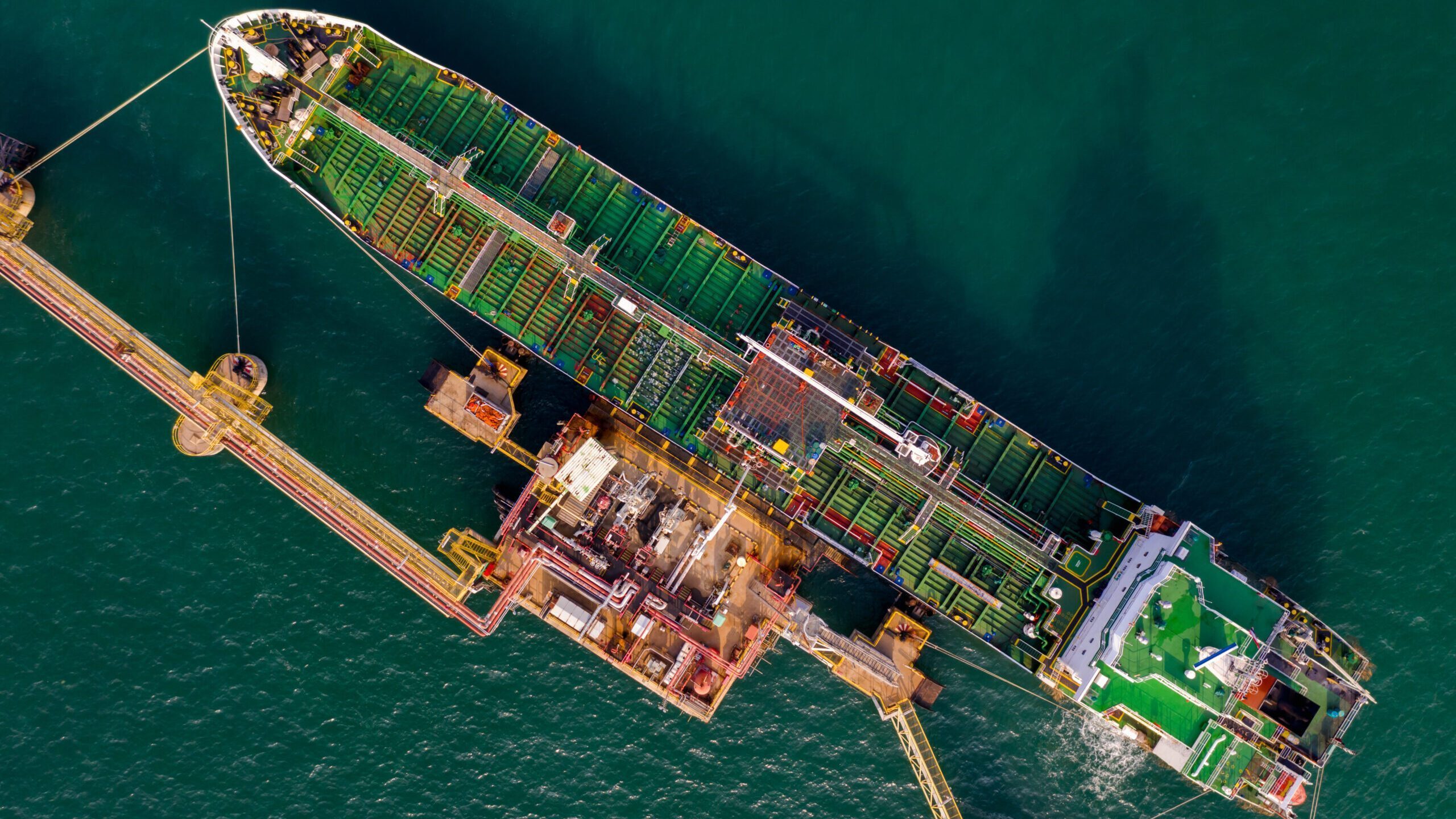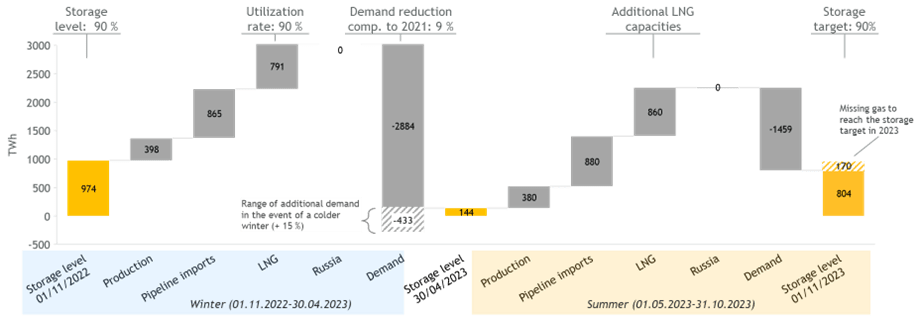
The efforts in recent months to save gas, purchase liquefied natural gas (LNG) on the global market and fill European storages have already led to an improvement in the security of supply in Europe. Nevertheless, further efforts on the demand side are necessary to ensure security of supply both in the coming winter – in the event of a colder winter – and in the following winter of 2023/2024, if there were no gas supplies from Russia, neither through Nord Stream 1 nor through transit countries like Ukraine or Turkey.
The availability of supply and demand for natural gas in the two coming winters was analyzed by a team from the Institute of Energy Economics at the University of Cologne (EWI) in the analysis “Gas Supply Outlook in the EU in the gas year 2022/2023”.
The analysis considers a scenario in which no more gas supplies would come from Russia from September 1, 2022, and the announced floating LNG terminals in Germany, the Netherlands, and Italy would be commissioned on time. The gas supply and demand balance shows that sufficient gas would then be available within Europe in the event of a winter with average temperatures if current savings are continued. However, the gas storages would have to be depleted to a historic minimum of 13 percent.

“Local supply shortages could nevertheless occur, as the European gas network might not be able to distribute gas volumes evenly across all countries,” says Dr. Eren Çam, manager at EWI. “Moreover, additional demand reduction measures are advisable to ensure supplies to gas consumers in the event of a colder winter.”
The analysis focuses on the period up to the end of winter 2022/2023, but also provides an outlook for 2023. If no supplies from Russia reach the EU in the long term, even the expansion of the planned LNG import terminals in the coming year will not bring any relief. “The low gas storage levels at the end of the coming winter would make refilling at the beginning of the next year as preparation for the winter 2023/2024 a major challenge”, says David Schlund, Senior Research Associate at EWI.
A new EU regulation requires European storage facilities to be filled to 80 percent by November 1, 2022, and 90 percent by November 1, 2023. While the former is likely to be achieved if demand reduction efforts continue, the latter would only be possible if additional savings are made. To maintain security of supply in both winters, it is therefore important that additional gas is saved during the coming months.